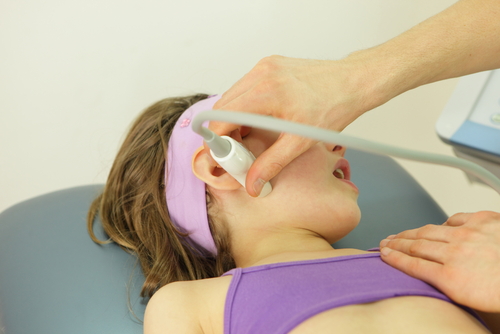Temporomandibular joint disease, or TMJ, is a common ailment affecting the muscles that move the jaw and the jaw joint. According to estimates, up to 12% of Americans will develop TMJ symptoms at some point in their lives.

Causes of TMJ:
A variety of things can cause TMJ; there is no one unique component that causes it. They consist of:
- Jaw joint or muscle trauma
- Joint arthritis 2. Teeth clenching or grinding
- A misaligned jaw or set of teeth
- Anxiety and stress
TMJ symptoms:
TMJ symptoms might differ from person to person, however, some of the more typical ones are as follows:
- Pain or tenderness in the jaw joint area, ear, face, and neck
- Difficulty opening or closing the mouth
- Clicking or popping sounds when opening or closing the mouth
- Locking of the jaw joint
- Headaches
- Tinnitus (ringing in the ears)
- Dizziness
Diagnosis of TMJ:
A comprehensive examination by a medical practitioner is necessary to diagnose TMJ, including a physical examination, a medical history review, and imaging tests like x-rays or MRI. In some circumstances, a referral to a specialist, such as an oral surgeon or a dentist with expertise in TMJ issues, may be required.
TMJ treatment:
Different TMJ treatments may be necessary depending on the severity of the illness and the patient’s symptoms. The following are a few of the commonest treatments:
- Pain management: Ibuprofen or acetaminophen, both available over the counter, can help reduce mild to moderate TMJ pain. In some circumstances, it could be required to take prescription painkillers or muscle relaxants.
- Lifestyle modifications: TMJ symptoms can be reduced by making simple lifestyle adjustments such as avoiding chewy or hard foods, learning stress-reduction strategies, and using hot or cold packs on the jaw.
- Dental treatments: Orthodontics or dental appliances may be required if the etiology of TMJ is connected to dental problems such as teeth grinding or misalignment.
- Physical therapy: Strengthening and stretching exercises for the jaw muscles can assist to lessen TMJ symptoms.
- Surgery: Repair or replace the joint may be required in severe TMJ situations that do not improve with previous therapies.
Prevention of TMJ:
While there is no guaranteed way to prevent TMJ, some strategies that may help reduce the risk of developing this condition include:
- Maintaining good posture
- Avoiding habits such as chewing gum or biting nails
- Using relaxation techniques to manage stress
- Seeking treatment for dental issues such as misaligned teeth or bite problems
In conclusion, TMJ is a condition that can cause significant discomfort and affect daily life. However, with proper diagnosis and treatment, many people with TMJ can find relief from their symptoms and improve their quality of life. If you are experiencing jaw pain or other TMJ symptoms, it is important to speak with a healthcare professional to determine the best course of treatment for your specific situation.